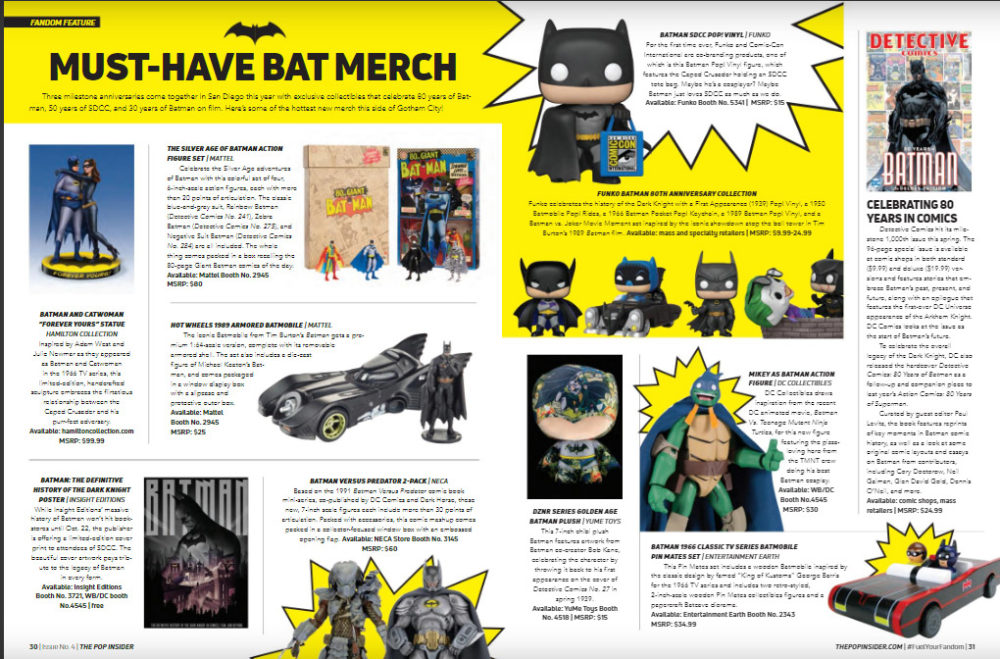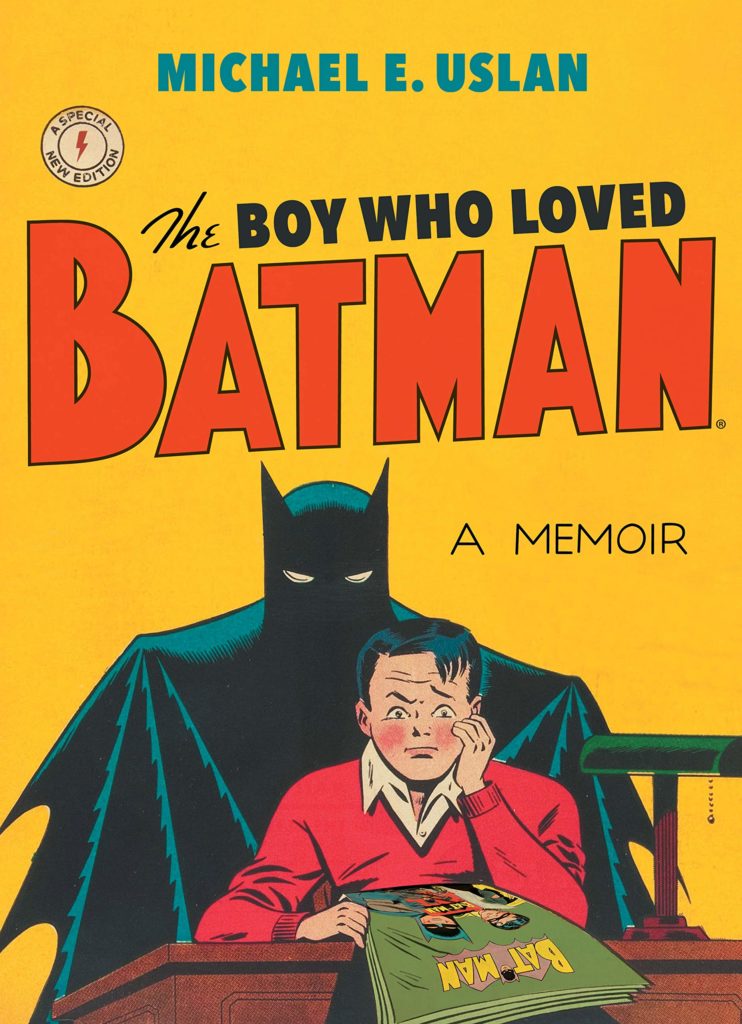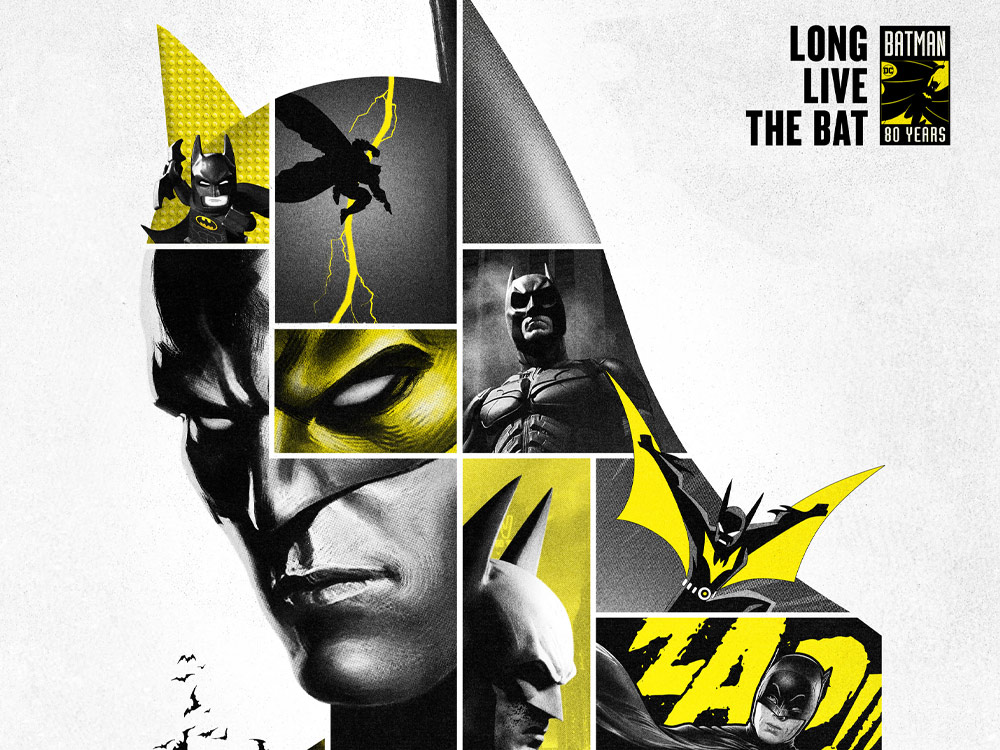
When Detective Comics No. 27 was released in spring 1939, it introduced the world to a new type of superhero — one with no “super” powers at all. “The Amazing and Unique Adventures of THE BATMAN!” was a call-out to readers to drop a dime on a story that would transport them right into the action of a bat-suited vigilante, framed in conversation between Commissioner Gordon and Bruce Wayne. It wouldn’t be until issue No. 33 that readers would be presented with the first telling of the Caped Crusader’s oft-recounted origin — a man driven to fight back due to the brutal killing of his parents, a tragedy he witnessed with his own eyes.
Created by Bob Kane and Bill Finger, Batman has a rich history that is continually rewritten, reworked, and reimagined. For a character rooted in a dark reality and devoid of supernatural powers, there’s a level of mythology that continues to transcend what can largely be considered humble beginnings.
How is it that a character intended to be a creature of the night — who would become a terrifying symbol for superstitious and cowardly criminals — can also work as a preschool toy, a comic book, a LEGO set, and a briefs-wearing member of the Super-Friends? To dig deeper, the Pop Insider went to perhaps the biggest Bat-fan of them all: Michael Uslan. A comic writer and historian, Uslan taught the first accredited college course on the serious study of comic books, and penned the 2011 autobiography, The Boy Who Loved Batman: A Memoir. He’s written Batman comics, but what he’s most-known for is being a producer of the Batman movies, acquiring the film rights to the character in the ‘70s and becoming the driving force behind the film that started the modern superhero box office reign — Tim Burton’s Batman (1989).
“It’s not just that Batman works for all ages, but across all borders, and for all cultures — that’s the rarity,” Uslan says.
THE FOUR KEY ELEMENTS OF BATMAN’S LASTING APPEAL
According to Uslan, there are four distinct, powerful elements that contribute to the immense appeal of Batman around the world.
1. No Superpowers: “Batman was the first superhero without superpowers, and is one of the rare ones who is without superpowers,” Uslan says. “I always contend that his superpower is his humanity, and it’s that humanity that constantly allows different people from all walks of life to identify with this character and to read in Bruce Wayne and/or Batman their own lives — their own personal experiences — and that’s incredibly powerful.”
2. The Origin Story: “Again, the origin story goes beyond borders and cultures,” he says. “It’s very primal — a kid watching his parents slaughtered right in front of his eyes, and at that moment sacrificing his childhood to make a commitment — one that he has
to walk through hell for the rest of his life in order to honor. That’s a powerful theme.”
3. The Stan Lee Theory of Super Villains: “I go to my dear friend, mentor, and idol, Stan Lee,” Uslan says. “What he often told me was that ‘the greatest, and most long-lasting, superheroes are the ones with the greatest super villains. Ultimately, it’s the super villains that define the superheroes.’ I really do believe that, inarguably, Batman has the greatest Rogues Gallery in the history of comics, but also the greatest super villain in the history of comics: the Joker. In comics, the only heroes to come close to Batman in terms of villains are Spider-Man and the Flash.”
4. The Magic of the Car: “The Batmobile is the car that inspired James Bond and others, so there’s definitely magic in the car,” he says.
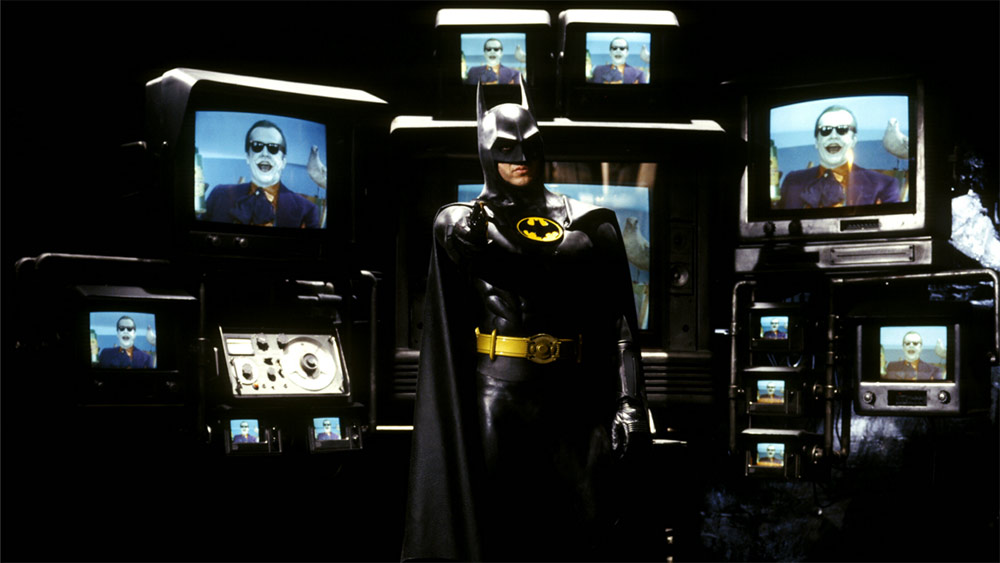
FROM COMICS TO SCREEN AND “THE ONE TRUE BATMAN”
The Batman first made the leap from printed page to film in a 1943 collection of serials that would directly introduce elements back into the comics, such as the Batcave. The 1966 TV series would likewise influence the source material, notably with Barbara Gordon adopting the persona of Batgirl, but the colorful camp was anything but true to the comics. Determined to bring to life a cinematic depiction of the character who would be true to its comic book roots, Uslan and fellow producer Benjamin Melniker purchased the film rights to Batman from DC comics in October 1979. Batman hit screens on June 23, 1989.
The film was a gigantic success that paved the way for comic book movies as mainstream entertainment and largely helped shape the way that Hollywood markets its films. Famously, it was also one of the first examples of “fan backlash,” with the casting of Michael Keaton as Bruce Wayne/Batman igniting an onslaught of angry letters to Warner Bros. with concerns that were immediately demolished when the film hit screens. For many fans, Michael Keaton is Batman. Over the past three decades, we’ve seen the same debate come up with every new film and each new actor — a phenomenon that’s been equally applied to nearly every superhero and super villain cast in every franchise from the DC Expanded Universe (DCEU) to the Marvel Cinematic Universe (MCU).
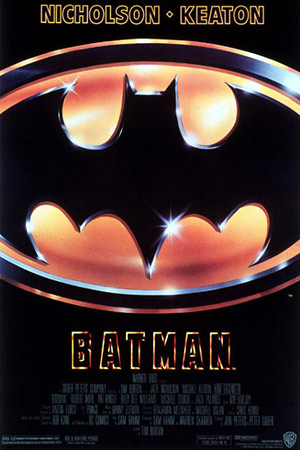 When you ask the question, “Who is the one true Batman?,” the answer will be subjective, and according to Uslan, that creates a unique challenge.
When you ask the question, “Who is the one true Batman?,” the answer will be subjective, and according to Uslan, that creates a unique challenge.
“Is it the creature of the night who stalks disturbed criminals from the shadows, as he was created in 1939 by Bob Kane and Bill Finger, and then enhanced by Jerry Robinson? Is it the Batman of the TV show, with the potbelly and the ‘Pows!’ and ‘Zaps!’? Is it Michael Keaton? Is it Christian Bale? Is it The Animated Series Batman, Kevin Conroy — Mask of the Phantasm?” Uslan questions. “What everyone needs to understand is that the one and only true Batman will probably be the first one they were introduced to — whether they were 8 years old or 12 years old, whether it was in a comic book, a movie, a TV show, or a video game, that will be their one true Batman — and it’s real.”
He adds that because of that, creators will never again be able to launch a new Batman story in any medium that will be the depiction of the character that every fan will envision. “It just can’t be that, but the great thing is that when you see the debates from fans on casting, who the filmmaker is going to be, what the Batsuit is going to look like, what the car is going to look like, who his voice is going to be — there are these fiery debates, and that’s the greatest thing. It’s wonderful that there are so many fans that care so deeply about this character and feel that he speaks to them,” he says.
HOW BATMAN INFLUENCED COMIC-CON
As Comic-Con International: San Diego (SDCC) celebrates its 50th anniversary this year, it’s important to note that one big component of the annual event did not originate in San Diego. Every summer, thousands of fans file into the legendary Hall H as studios trot out filmmakers, producers, writers, and cast members to present early details on the latest comic and pop culture properties headed to the big screen. In fact, Hall H opened with a Batman Begins panel in 2004, a low-key affair that featured just two players from the film: screenwriter David Goyer and actor Cillian Murphy (Dr. Jonathan Crane/ Scarecrow). At the time, the film was still in production, and no footage was shown. Three years later, Marvel Studios hit the scene, with director Jon Favreau dropping a surprise preview of Iron Man in 2007, solidifying Hall H as the rock star stage of SDCC — what the entertainment industry would embrace as perhaps its most important room.
What few, if any, realized was that the industry had essentially embraced a business model that was unknowingly created in the summer of 1980 at the Statler Hilton Hotel in New York City. It was during the annual Comic Art Convention that producers Michael Uslan and Benjamin Melniker first revealed their plans for Batman to the comic audience.
“We were the first ones ever in history to announce a major motion picture at a comic-con,” Uslan recalls. “For better or worse, I’m a fanboy. I was at the first-ever comic convention held …, in July 1964 in New York City at a fleabag hotel. 200 of us showed up at the first comic-con — 197 guys, and three girls. This will be my 55th annual convention between New York and San Diego.”
Between ‘79 and ‘80, Uslan and his partners had already had their Batman pitch turned down by every studio and mini-major in Hollywood. The “dark and serious” approach wasn’t selling to an industry that could only remember the colorful camp of Adam West and Burt Ward as Batman and Robin. To sell the idea, Uslan and co. turned to the fans of the source material.
“At that time, we had made our deal to develop the film with Casablanca Records, which had just started a Filmworks division, courtesy of a cash infusion from Polygram in Europe,” Uslan explains. “Because we weren’t dealing with a major studio, and because the guys running Casablanca at the time — Peter Guber and his partner, Neil Bogart — were younger and hipper than the guys at the studios and actually got my pitch, … I was able to convince them to allow me to announce the film at the New York convention, which was the biggest at the time. The fandom was growing with such passion, and to get the emerging fan press — and at that time, fan ‘zines — behind us would be critical to making a dark and serious comic book film when all the studios said that it would never fly and never work.”
With a small budget approved from Casablanca Records & Filmworks, Uslan made a deal with Phil Seuling, who was running the convention at that time.
“We were able to get the Bat Signal projected onto the Empire State Building that night,” Uslan recalls. “We invited mainstream press, but also fan press and gave them equal status. We held a cocktail party for all the pros in the industry, and there were five of us that spoke: DC Comics [president] Sol Harrison and [publisher] Jenette Kahn, [Batman creator] Bob Kane, and Ben Melniker and myself. When I spoke, knowing that I was speaking directly to the fans and the fan press, I made the point of starting my talk by saying, ‘This is not going to be a Batman movie. This is not going to be a movie about Batman. Ladies and gentleman, this is going to be a movie about the Batman!’ and with that, the place went apesh*t crazy. Every fan in the building knew the language … I was speaking — that there was a difference between calling him Batman and referring to him as the Batman.”
IT WAS HALL H BEFORE HALL H
This summer, filmmaker Matt Reeves’ (Cloverfield, War for the Planet of the Apes) The Batman takes shape with Robert Pattinson (The Rover, the Twilight Saga) signed as the next actor to don the cape and cowl in a noir-based story said to focus in on Batman as “The World’s Greatest Detective” — a major element of the comics that’s not yet been deeply explored on screen. Showing just how much the world of film marketing has changed in the three decades since Batman in 1989, Reeves confirmed the casting with a single tweet.
DC is said to be skipping Hall H this year, but Uslan will be at SDCC for a Saturday night panel celebrating 30 years of Batman ‘89.
After eight decades in print, and three decades in theaters, the cycle of reinvention for the Dark Knight and his famous Rogues Gallery will no doubt continue for many decades to come.
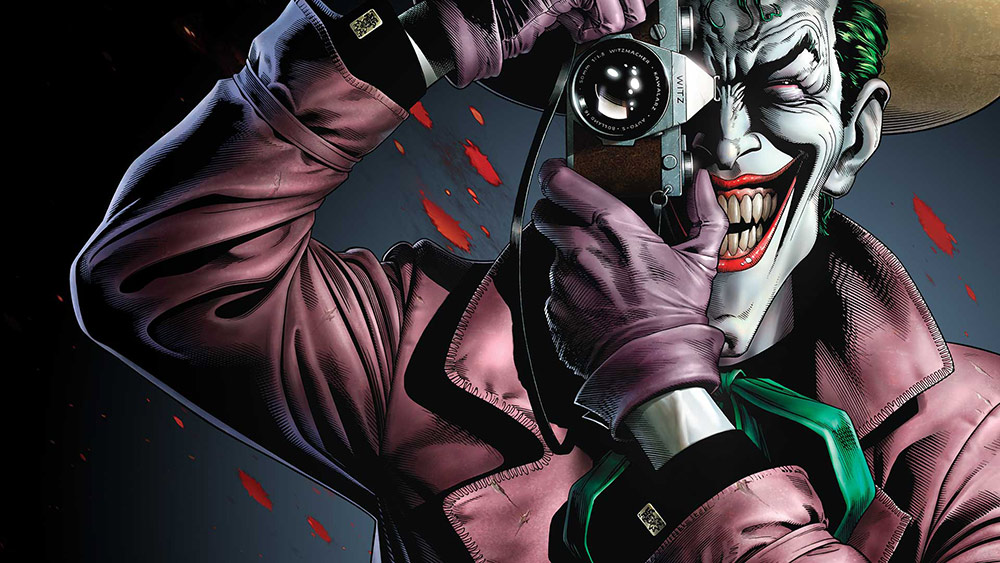
Bonus Feature: The Man Who Laughs
In spring 1940, Batman and Robin graced the cover of Batman No. 1 — jumping from the pages of Detective Comics into the long-running solo Bat title. Since that issue, Gotham City has repeatedly been the brunt of some cruel humor in scenarios conducted and manipulated by the Clown Prince of Crime: the Joker.
Unlike most of the dastardly villains we’ve come to know, the Joker has yet to receive a definitive origin story, with his background, identity, and motivation a reflection of the era. Unlike the evolution of Batman himself, audiences seem to be less concerned with the conflicting stories behind the character — stories that often borrow elements from one another like a legend that’s been passed down through the ages. Created by Bill Finger, Bob Kane, and Jerry Robinson, the Joker’s lack of a true history was left open by design, but the evolution continues via countless authors and portrayals.
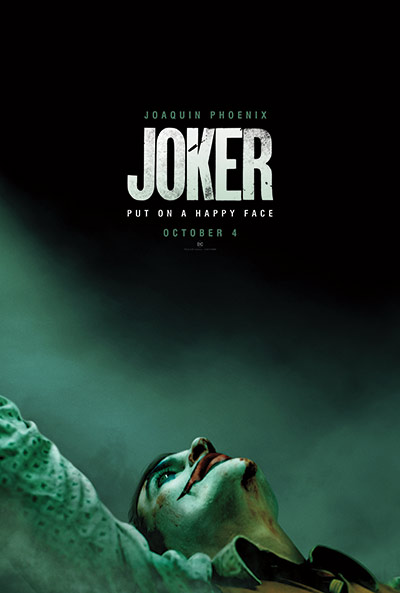 “It’s one of the mystical reasons why super villains can work so well, and why the Joker has been the best super villain ever created, and the longest lasting,” Uslan says, pointing to Alan Moore’s 1988 graphic novel, Batman: The Killing Joke, as a prime example of why audiences general accept different takes on the character. In that story, the Joker distinctly states, “If I’m going to have a past, I prefer it to be multiple choice!”
“It’s one of the mystical reasons why super villains can work so well, and why the Joker has been the best super villain ever created, and the longest lasting,” Uslan says, pointing to Alan Moore’s 1988 graphic novel, Batman: The Killing Joke, as a prime example of why audiences general accept different takes on the character. In that story, the Joker distinctly states, “If I’m going to have a past, I prefer it to be multiple choice!”
“People don’t necessarily believe that the story being peddled at any given time is the real story,” Uslan says. “I love the fact that in The Killing Joke, you get all of these different origin stories, and then in the end it’s up to you to decide which one is the real story, or if the Joker is just completely delusional and none of them are the real story.”
On Oct. 4, a new cinematic reimagining will occur as Joaquin Phoenix performs the role in director Todd Phillips’ Joker, executive produced by Uslan. Set in 1980, the story will borrow from one of The Killing Joke’s possible origins, presenting the character as struggling comedian Arthur Fleck. “The ambiguity behind these deeply disturbed villains is part of the magic and charm to them. That’s why I’ve never been a fan of showing super villains in grade school, or high school, or college. It’s about allowing people to believe what they want to believe, and project their own feelings into it,” Uslan explains.
In making the jump from comics to screen, whether it is live action or animation, Uslan says the ambiguity works “spectacularly well” with the Joker, and that’s why audiences continue to identify with the character from book to book, movie to movie, and actor to actor.
Iconic Joker Performances:
Michael Uslan believes that if someone were to build a Mount Rushmore to the character of the Joker, there would be three figures carved into it at this specific moment in time, all of whom are notable for their unique portrayals of the criminal icon.
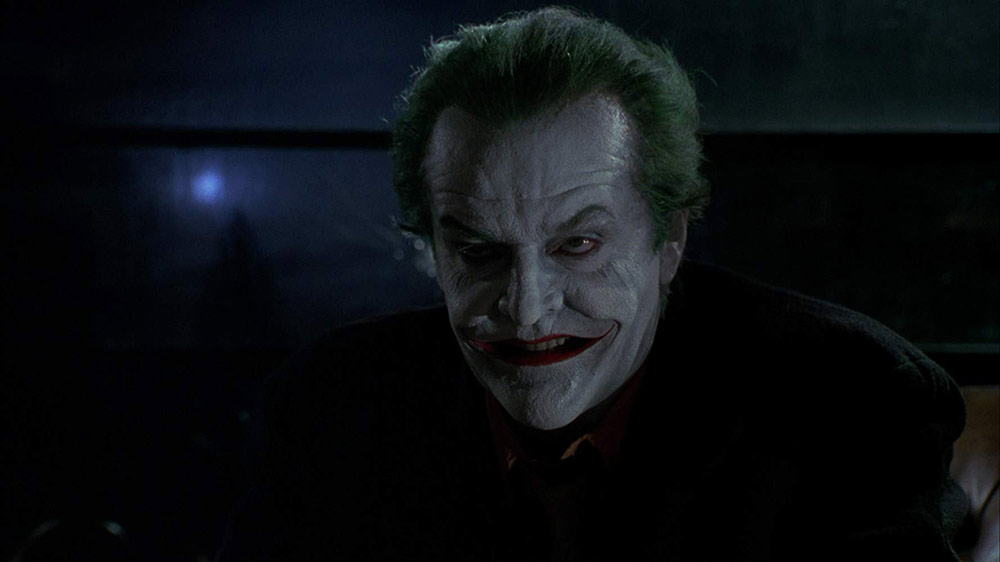
Jack Nicholson, Batman, 1989: “To me, Jack was the true Joker, circa 1989, as he was portrayed in the comic books. In the comics at that time, there was talk of a black-and-white world of good versus evil, with the Joker as ‘The Clown Prince of Crime.’ Nicholson brought that directly onto the screen.”
Heath Ledger, The Dark Knight, 2008: “Heath was our Joker at a time when our world was grey, and it was order versus chaos. This was the Joker as a homicidal maniac, and Ledger brought that to life so effectively.”
Mark Hamill, Voice of the Joker, Multiple Projects: “Mark has been the definitive voice of the Joker. He has been able to bring every aspect of the Joker to the screen, even though he’s only been working through the magic of his voice.”
This article was originally published in the Pop Insider’s Summer 2019 Issue No. 4, click here to read more!
